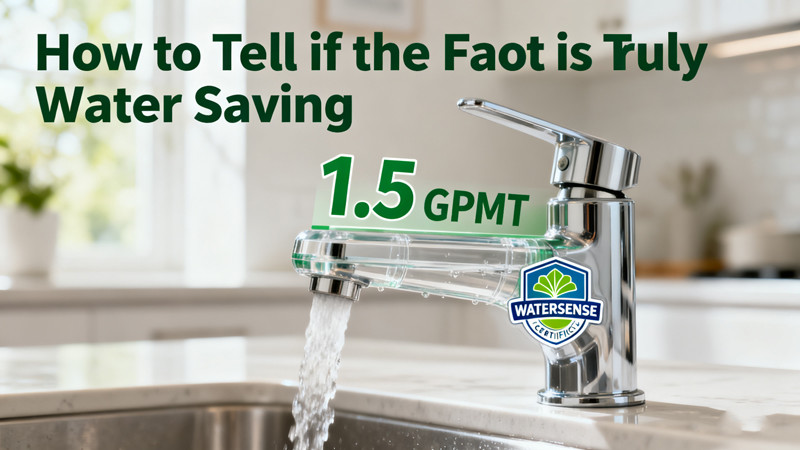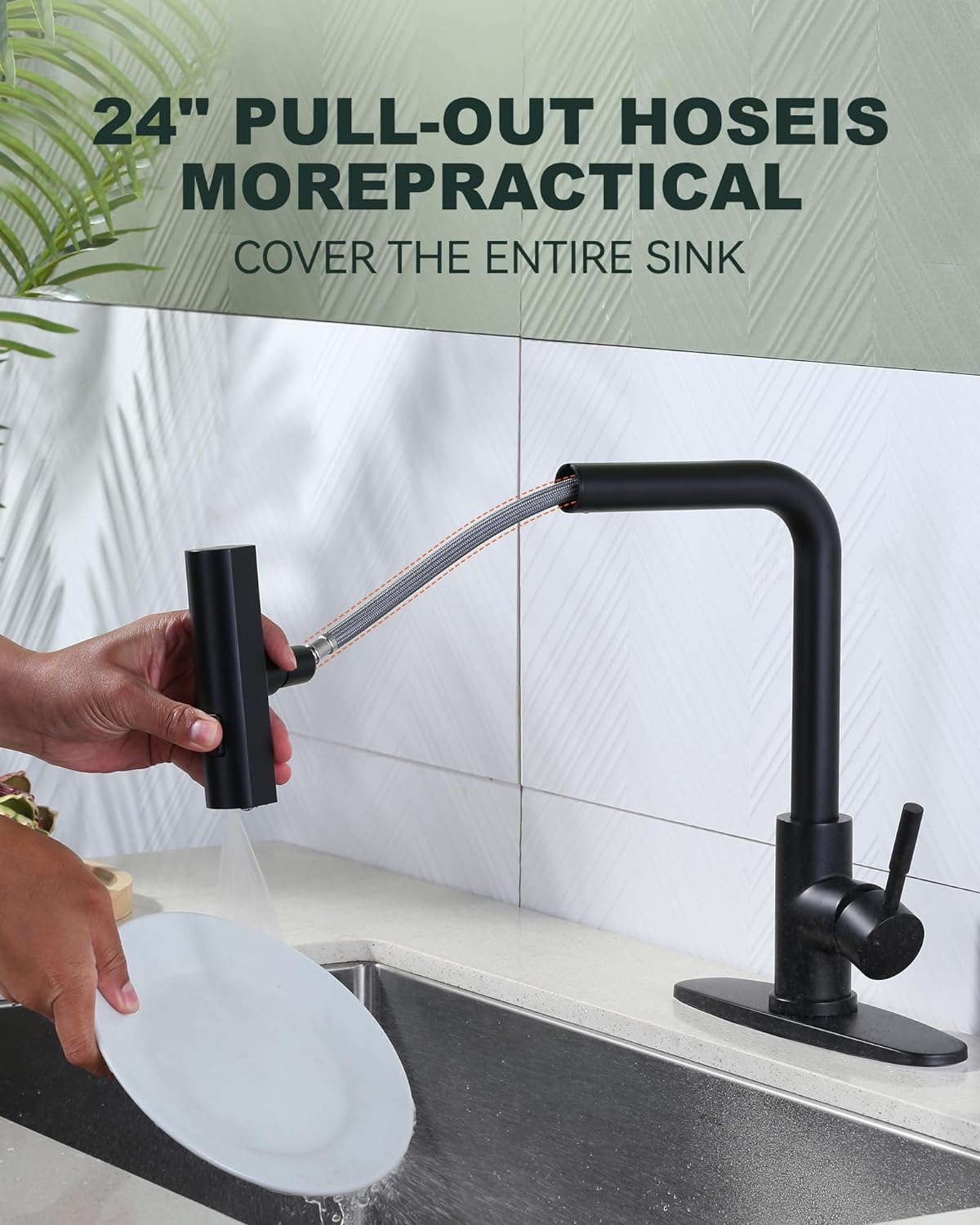
In an age where sustainability and resource efficiency are becoming top priorities, water-saving faucets have gained significant attention. Many manufacturers now advertise their products as “eco-friendly” or “low-flow,” promising to reduce water consumption without compromising performance. But with so many claims on the market, how can you tell if a faucet is truly water-saving—or just labeled that way for marketing?
Let’s explore the key factors, certifications, and performance indicators that help identify a genuinely water-efficient faucet.
1. Understanding What “Water-Saving” Really Means
Before diving into details, it’s important to define what makes a faucet water-saving.
A standard bathroom faucet typically uses 2.2 gallons per minute (GPM) at 60 psi, while modern water-saving faucets often reduce this flow rate to 1.5 GPM or even 1.2 GPM—a reduction of up to 45%. Kitchen faucets tend to have slightly higher flow rates to handle rinsing and filling tasks efficiently, usually between 1.5 to 1.8 GPM for water-efficient models.
However, water-saving isn’t just about limiting flow. A truly efficient faucet balances reduced water use with maintained functionality, meaning you still get sufficient pressure for washing hands, rinsing dishes, or filling containers. Advanced aerators, pressure-compensating valves, and smart flow regulators make this balance possible.
2. Check for WaterSense Certification
One of the easiest ways to verify a faucet’s efficiency is by looking for the WaterSense label—a program established by the U.S. Environmental Protection Agency (EPA).
A faucet with the WaterSense label must meet strict criteria:
- Flow rate of 1.5 GPM or less for bathroom models.
- Performance testing that ensures the faucet provides adequate spray force.
- Independently certified by third-party laboratories.
WaterSense-certified faucets can reduce water usage by up to 30% or more compared to standard models. They also help households save on both water and energy bills since less hot water is used.
If you see the WaterSense logo on the product packaging or listing, you can trust that the faucet is officially recognized for water efficiency.
3. Compare Flow Rates (GPM Ratings)
Every faucet is required to list its flow rate, usually expressed in GPM (gallons per minute) or sometimes in L/min (liters per minute) for international models.
Here’s a quick reference chart to help you interpret those numbers:
| Faucet Type | Standard Flow Rate | Water-Saving Flow Rate | Super-Efficient Flow Rate |
|---|---|---|---|
| Bathroom | 2.2 GPM | 1.5 GPM | 1.2 GPM |
| Kitchen | 2.2 GPM | 1.8 GPM | 1.5 GPM |
| Showerhead | 2.5 GPM | 2.0 GPM | 1.5 GPM |
A faucet that falls within the “Water-Saving” or “Super-Efficient” range while still delivering consistent performance is a strong indicator of genuine efficiency.
Be cautious with ultra-low-flow models below 1.0 GPM unless designed for specific uses, as they may feel weak and frustrate users, leading to longer running times that negate the savings.
4. Inspect the Aerator Design
The aerator—a small mesh screen at the faucet’s tip—is one of the key components that determine how efficiently water is used.
Aerators mix air with water to maintain pressure while reducing actual water flow. High-quality aerators can make a 1.2 GPM faucet feel just as strong as a 2.2 GPM one.
Here’s what to look for:
- Pressure-compensating aerators: Maintain consistent flow even when water pressure fluctuates.
- Laminar flow devices: Deliver a clear, splash-free stream suitable for medical or food-prep environments.
- Removable aerators: Allow easy cleaning and replacement to maintain performance over time.
If you can’t identify the aerator type, check the manufacturer’s specifications—reputable brands will clearly list this detail.
5. Pay Attention to Smart Features
Modern faucets are becoming increasingly smart, and technology plays a major role in water efficiency.
Here are a few innovations that make a faucet genuinely water-saving:
- Touchless or sensor-activated controls: Prevent accidental water waste by automatically turning off when not in use.
- Flow timers or pause buttons: Useful for tasks like brushing teeth or scrubbing dishes.
- Temperature presets: Reduce the need to run water while adjusting the temperature.
- Smart home integration: Some high-end models sync with apps to track water usage and detect leaks.
While these features add convenience, they also ensure that every drop counts—especially in busy households or commercial settings.
6. Consider Material Quality and Maintenance
A faucet that saves water today but fails in a year is not truly sustainable. Durability is an often-overlooked part of efficiency.
Look for faucets made of solid brass, stainless steel, or lead-free materials with ceramic disc cartridges that prevent leaks. Even a small, unnoticed drip can waste over 2,000 gallons of water per year.
Ease of maintenance also matters—faucets with replaceable parts, standard fittings, and accessible aerators make it simpler to keep them performing efficiently.
7. Read Verified Reviews and Test Results
Finally, don’t just take the manufacturer’s word for it. Check independent reviews, plumbing forums, and consumer reports to see how the faucet performs in real-world conditions.
Look for mentions of:
- Strong but gentle flow.
- Consistent water pressure.
- Noticeable water savings without extended use times.
- Durability of finishes and components.
If many users report that the faucet delivers the same performance with less water, that’s a strong sign it’s truly efficient.
8. Bonus Tip: Combine with Other Water-Saving Fixtures
To maximize your conservation efforts, consider pairing your faucet with other eco-friendly fixtures like:
- Low-flow showerheads
- Dual-flush toilets
- Smart water meters
- Leak detectors or shut-off valves
Together, these upgrades can significantly reduce your household’s water footprint and utility bills while promoting a sustainable lifestyle.
Conclusion
Not every faucet labeled “eco-friendly” truly delivers on that promise. To identify a genuine water-saving faucet, focus on objective criteria—certifications like WaterSense, verified flow rates, high-quality aerators, durable construction, and real user experiences.
By making informed choices, homeowners can enjoy stylish, functional faucets that conserve water, lower energy costs, and contribute to a greener future—without sacrificing performance or comfort.
 iVIGA Faucet Online Shop
iVIGA Faucet Online Shop

